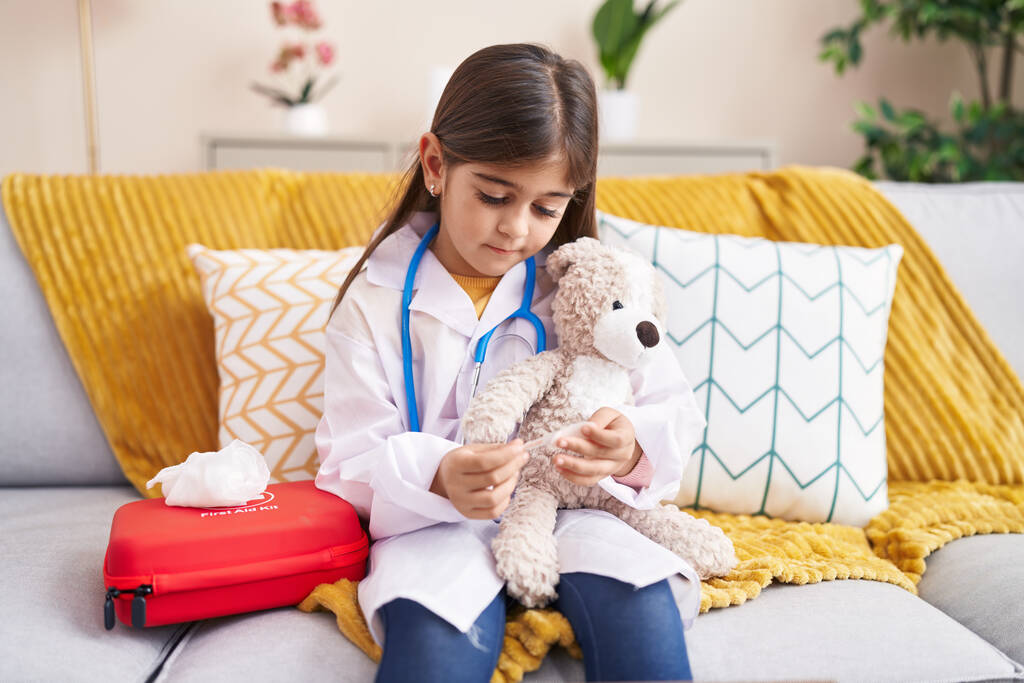Discover effective strategies for teaching basic first aid to 10-11 year old children in this informative article.
Teaching Basic First Aid to 10-11 Year Old Children
Teaching basic first aid to 10-11 year old children is not only necessary but also a fun and interactive way to empower them with life-saving skills. In this article, we will explore the various aspects of teaching first aid to children in an engaging manner. From understanding the importance of first aid to learning basic skills and preparing a kid-friendly first aid kit, let’s dive into the world of first aid education for young minds.

Understanding the Importance of First Aid for Children
When it comes to children’s safety, first aid plays a crucial role. By teaching kids basic first aid skills, we equip them with the knowledge and ability to respond quickly and appropriately in case of an emergency. First aid can make a significant difference in preventing further harm and even saving lives.
Imagine a scenario where a child is playing at the park and suddenly falls off the swing, injuring their arm. Without the knowledge of first aid, bystanders may panic and not know how to help. However, if children are educated about first aid, they can step in and provide immediate care, such as applying a cold compress or immobilizing the injured arm. This quick response can alleviate pain and prevent further damage.
The Role of First Aid in Safety
First aid acts as a safety net, providing immediate care until medical professionals arrive. By teaching children how to respond in emergency situations, we empower them to act confidently and responsibly, making them valuable assets in times of need.
Moreover, first aid education helps children develop a sense of responsibility towards their own safety and the safety of others. They learn to identify potential hazards and take necessary precautions to prevent accidents. For example, they may learn how to properly use safety equipment like helmets or seat belts, reducing the risk of injuries.
Benefits of Early First Aid Education
Early first aid education can have lifelong benefits. It not only teaches children essential life skills but also builds their confidence and resilience. In addition, it fosters a sense of compassion and empathy towards others, as they learn to provide care and support.
When children learn first aid, they become more aware of the well-being of those around them. They develop the ability to assess situations and take appropriate action, whether it’s calling for help or administering basic first aid techniques. These skills can be applied not only in emergencies but also in everyday situations, such as helping a friend who has a minor injury or assisting someone who is feeling unwell.
Furthermore, early first aid education can have a positive impact on children’s mental health. It gives them a sense of empowerment and control over their environment, reducing anxiety and fear in emergency situations. They become more resilient and better equipped to handle stressful situations, which can contribute to their overall well-being.
In conclusion, first aid education for children is of utmost importance. It equips them with the necessary skills and knowledge to respond effectively in emergencies, making them valuable assets in ensuring the safety and well-being of themselves and others. By teaching children first aid, we are not only preparing them for potential emergencies but also empowering them to be responsible, compassionate individuals who can make a difference in the world.
Basic First Aid Skills for Kids
Now that we’ve understood the importance, let’s delve into some basic first aid skills we can teach children.
First aid is a valuable skill that can empower children to help others in times of need. By equipping them with the knowledge and confidence to respond appropriately, we are fostering a sense of responsibility and compassion.
Here are some essential first aid skills that children can learn:
Recognizing an Emergency Situation
The first step in providing first aid is recognizing an emergency situation. By teaching children to be aware of signs such as someone being unconscious, severe bleeding, or difficulty breathing, we prepare them to respond promptly.
For example, explain to children that if they see someone lying on the ground and not responding, it could be a sign of an emergency. Encourage them to trust their instincts and immediately seek help from a trusted adult or call 911.
Furthermore, teach them to look out for other signs of distress, such as someone clutching their chest or struggling to breathe. By being observant, children can play a vital role in identifying emergencies and getting the necessary help.
Calling for Help: 911 and Other Important Numbers
Knowing how to call for help is crucial. Teach children the emergency hotline, such as 911, and other important numbers they may need to dial in specific situations. Emphasize the importance of staying calm and providing clear information to the dispatcher.
Role-playing scenarios can be an effective way to teach children how to make emergency calls. Create a simulated emergency situation and guide them through the steps of dialing the emergency number, speaking clearly, and providing essential details about the situation.
Additionally, educate children about other important numbers they may need to call in non-emergency situations, such as poison control or a trusted neighbor. This knowledge can empower them to take appropriate action when faced with different types of emergencies.
Basic CPR for Children
CPR, or cardiopulmonary resuscitation, is a life-saving technique that can be taught to children. Demonstrate and explain how to perform CPR on a child-sized mannequin, stressing the importance of compressions and rescue breaths.
Children can learn the basic steps of CPR, including checking for responsiveness, calling for help, and performing chest compressions. Encourage them to practice these steps regularly to build muscle memory and confidence.
Furthermore, explain to children that CPR is not only for adults but can also be used to help other children in need. By teaching them this skill, we are equipping them with the ability to potentially save a life.
Handling Minor Injuries: Cuts, Scrapes, and Bruises
Minor injuries are a common occurrence among children. Teach them how to clean and dress small wounds, apply bandages, and provide comfort to someone who’s hurt. Encourage them to be gentle and reassuring in such situations.
Show children how to wash their hands before attending to someone’s injury to prevent infection. Explain the importance of using clean materials, such as sterile gauze or band-aids, to cover the wound properly.
Additionally, teach children the importance of empathy and compassion when someone is hurt. Encourage them to offer words of comfort and reassurance, as well as to be patient and understanding.
By instilling these basic first aid skills in children, we are not only preparing them to respond to emergencies but also nurturing their empathy and kindness towards others.
Teaching First Aid: Methods and Techniques
Teaching first aid effectively requires engaging methods and techniques. Let’s explore how we can make first aid lessons memorable and enjoyable for children.
When it comes to teaching first aid, it’s crucial to capture the attention of young learners. One way to make the learning process exciting is by using games, storytelling, and role-playing. By transforming important first aid concepts into interactive activities, children not only have fun but also develop a deeper understanding of the subject matter. Imagine a game where children have to act out different emergency scenarios and apply the appropriate first aid techniques. This not only keeps them interested but also helps them retain the information better.
Visual aids are another powerful tool for effective teaching. Posters, diagrams, and videos can be used to illustrate various first aid techniques. By showing children visual representations, they can better grasp the steps involved in providing first aid. Additionally, encouraging children to create their own visual aids fosters creativity and active participation. They can draw posters or create short videos demonstrating the correct procedures for different situations. This not only reinforces their learning but also empowers them to become teachers themselves.
However, teaching first aid is not just about theory and visuals; it’s about practical application. Practice makes perfect! Providing ample opportunities for children to practice their first aid skills is essential. Organizing simulated scenarios or partner activities allows them to apply what they’ve learned in a safe and controlled environment. For example, setting up a first aid station where children can practice bandaging wounds or performing CPR on mannequins can greatly enhance their confidence and competence in real-life situations.
Furthermore, incorporating real-life stories and examples into the lessons can make the learning experience more relatable and impactful. Sharing stories of individuals who have successfully used first aid techniques to save lives can inspire children and motivate them to learn and apply these skills themselves. These stories can be sourced from news articles, personal experiences, or even guest speakers who have firsthand knowledge of emergency situations.
In conclusion, teaching first aid effectively requires a combination of engaging methods and techniques. By making the lessons interactive, using visual aids, providing ample opportunities for practice, and incorporating real-life stories, we can ensure that children not only learn first aid but also develop the confidence and skills to be proactive in emergency situations.
Preparing a Kid-Friendly First Aid Kit

A well-prepared first aid kit is essential for any emergency situation. It’s important to have all the necessary items on hand to provide immediate care when needed. But why not involve children in the process of preparing their own kid-friendly first aid kits? By doing so, we not only teach them about the importance of being prepared but also empower them to take charge of their own well-being.
When gathering essential items for a child’s first aid kit, it’s important to consider their specific needs. Adhesive bandages are a must-have, as children are prone to minor cuts and scrapes during their active playtime. Antiseptic wipes are also crucial to clean wounds and prevent infection. Gauze pads can come in handy for larger injuries, while tweezers are useful for removing splinters or foreign objects. By explaining the purpose of each item and demonstrating their use, we can educate children about the importance of these tools in providing immediate care.
Once the first aid kits are ready, it’s time to teach children how to use the items correctly. This is an opportunity to engage them in hands-on learning and practical skills. Show them how to clean wounds properly, emphasizing the importance of washing hands before and after administering first aid. Demonstrate how to apply bandages securely, ensuring that they cover the wound completely. Teach them how to provide relief for common injuries like minor burns or insect bites. By involving children in these activities, we not only equip them with essential knowledge but also instill a sense of confidence in their ability to handle emergency situations.
Teaching basic first aid to 10-11-year-old children should be an engaging and enjoyable experience. By using interactive teaching methods, such as role-playing or games, we can make the learning process fun and memorable. Encourage children to ask questions and share their own experiences, fostering a sense of curiosity and active participation. By focusing on essential skills like recognizing and responding to emergencies, performing CPR, and providing basic wound care, we can ensure that children are well-prepared to handle various situations.
Involving children in the process of preparing their own first aid kits not only promotes independence and a sense of responsibility but also nurtures their empathy and compassion. By teaching them how to care for themselves, we are also teaching them how to care for others. Empowering children with these life-saving skills not only protects them but also prepares them to be heroes in their own right. So let’s encourage our little ones to take charge of their own well-being and become confident and responsible first aid providers.



